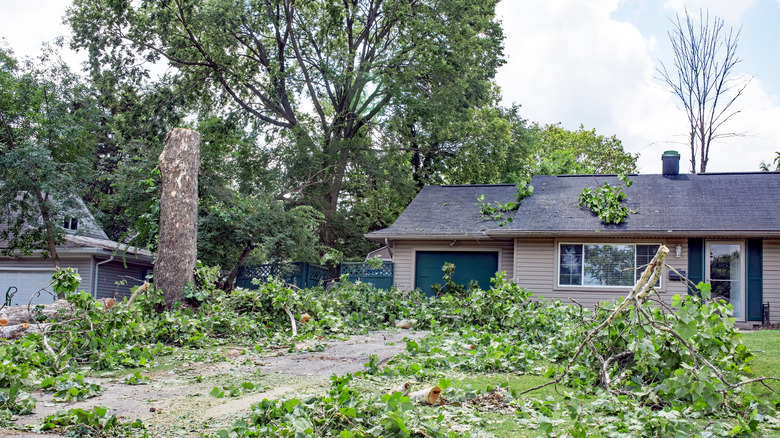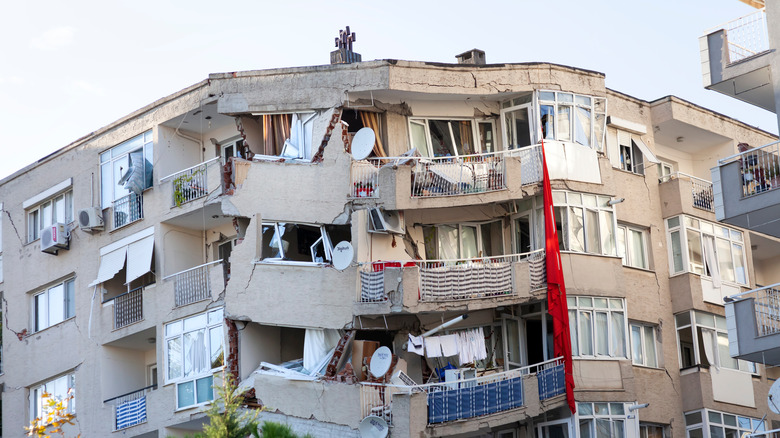What Is Hazard Insurance In Real Estate?
In real estate, hazard insurance is coverage that protects the structure, roof, and foundation of a home from damaging events. For example, if a home is damaged by fire, hazard insurance will help cover the cost of any necessary rebuilding. Though this sounds similar to homeowner's insurance, the key difference is that homeowner's insurance is the general term for all coverage of your property — this includes items within the home like furniture, jewelry, clothing, and appliances. Hazard insurance is a specific section within your homeowner's insurance policy that protects the structure of the home. This can also include any surrounding structures like a garage or pool house.
Since hazard insurance is a subsection within a homeowner's insurance policy, they are bought together. Mortgage lenders usually require homeowner's insurance. Many lenders will require that you are insured to the full replacement cost of your home. The cost will depend on factors like property size, location, and materials used to build the home. According to Bankrate, the average cost of hazard and homeowner's insurance in 2022 is $1,383 per year.
What is covered by hazard insurance?
Forbes lists 16 different hazards, sometimes called perils, that are typically covered in hazard insurance. These include natural disasters like storms and volcanic eruptions, and also things like vandalism, explosions, and damage from vehicles. In areas susceptible to certain natural disasters, insurance companies may exclude that specific event in their policy. In this case, the homeowner may have to buy a separate policy. For example, homeowners in California may have to buy a separate policy to insure their homes against earthquakes. This is because including earthquake coverage in the standard policy would result in a net loss for the insurance company. Any separate policy intended for a specific type of disaster is known as catastrophe insurance.
When reviewing your insurance policy, it is important to carefully read over the hazards section to check what is covered. Damage from flooding, rodents, and mold are usually excluded from hazard insurance policies. Knowing what is covered and adjusting your policies accordingly is the best way to protect yourself from financial burden in the event of a disaster.

